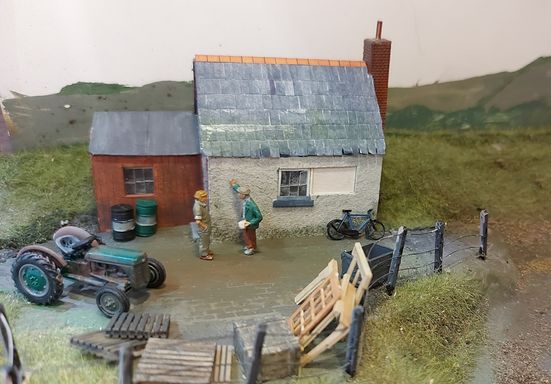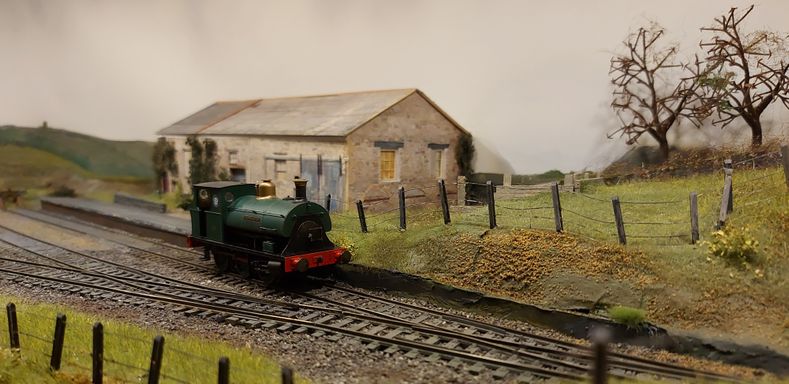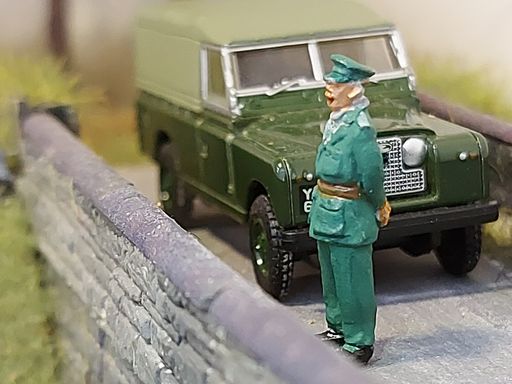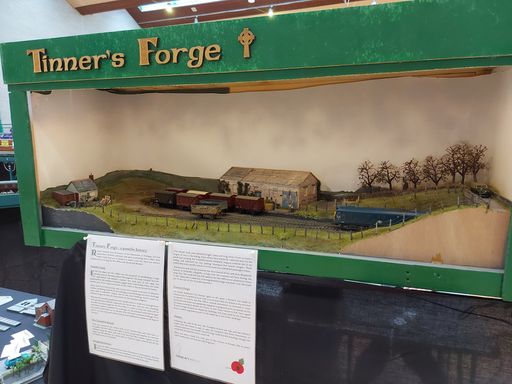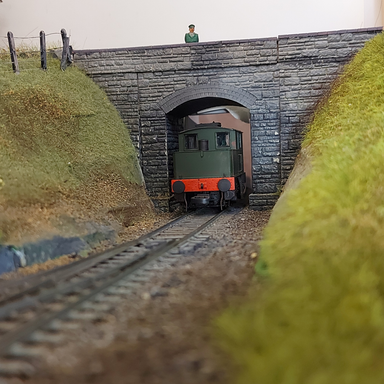Tinner's Forge
Many years ago, I built a 3/4 model of an old stone building, which I later thought deserved to be on a layout.
Tinner's Forge is an inglenook shunting puzzle, using Peco Finescale track and electromagnets to uncouple the Brian Kirby style couplings.
The only other buildings are a bridge, based on the one at Rejarrah, and a freelance hut and shed.
Tinner's Forge - a possible history
Recent research into the history of the Chacewater to Newquay line has unearthed a hitherto unknown and quite interesting story. What most books would lead you to believe is mostly true, but there are sinister undertones involving the War Office and the British Military.
Penhale Camp
In the late 1890s, the War Office saw the potential of establishing a large training camp on the dunes above Perranporth. The camp was split into two for operational and security reasons. The main part of the camp was positioned on the headland between Ligger Point and Penhale Point, the other smaller part of the camp was hidden in the valley to the southwest of Cubert.
Here, well away from prying eyes, troops were trained in all sorts of offensive combat, including demolition and sabotage. Local buildings and mine workings were used as makeshift targets, and an old stone building, known locally as Tinner’s Forge, became the main stores for the necessary supplies.
Whereas the Cornish population were usually keen to avoid any entanglement with government officials, especially the Excise Men, this 'not seen anything' attitude was encouraged by the War Office in order to keep the camp and its activities as quiet as possible. In exchange, the Government itself discouraged too much involvement of its officers with the locals' nocturnal dealings. Even today, only the main part of the camp on the headland is marked on OS Maps of the area.
The Treamble Branch
With the arrival of the railway first to St Newlyn East, and then later to Treamble, the War Office were able to move troops and supplies to and from Penhale Camp far easier and with even less fuss. What doesn’t appear on the maps was the addition of a short spur to Tinner’s Forge, constructed off the southerly curve to Treamble.
Shepherds Station
In 1903 the GWR opened the line from Chacewater to Perranporth. The War Office pressed for the line to be extended to join with the Treamble branch, and Shepherds farm was chosen as the most inconspicuous spot.
The simple track plan allowed freight trains arriving from Truro to leave a wagon or two in the siding, from where they would be collected later by the small loco running the Treamble branch. Similarly, wagons could be left in the siding and collected by any passing Newquay/Par bound freight. These collections were usually timed to be between any scheduled passenger trains.
Well-known and well documented was the removal of the rails from Shepherds Station to Treamble, allegedly to help with the overseas rail lines during the Great War. The track bed was still used by the War Office as an alternative route to the Camp and a massively over-engineered bridge was built over the track just to the east of the Treamble junction.
Tinner’s Forge
As clouds darkened over Europe again in the 1930s, a decision was made to reinstate the Treamble branch, with a cover story that the mines in the area had re-opened. In reality, the War Office wanted somewhere in Cornwall to store munitions and other non-perishable supplies in preparation for an assault on the European mainland, should the 'Peace in Our Time' initiative fail. Once again Tinner's Forge became an important building, this time used by the American Army combat engineers as part of the build up to the D-Day landings.
Closure
Following the end of the war, the Treamble branch saw less and less military traffic and was closed in 1952. In 1963, the complete line from Chacewater to Tolcarne Junction was closed. Tinner's Forge itself was left standing, though the track bed and platform were removed.
What was once a small, but vital, part of the victory in Europe, like so many other memories, now lies lost and forgotten.

